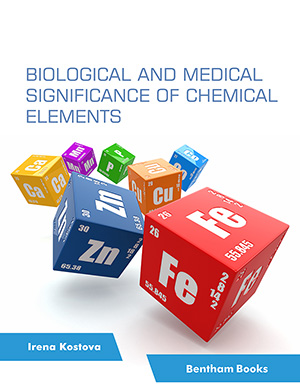Abstract
The increasing commonality of multi-drug-resistant bacteria as well as fungi is the motive for the development of new active antimicrobial agents. Heterocyclic compounds are major contributors in medical chemistry and are also found in biomolecules like vitamins, enzymes, natural products, etc. Benzimidazole is one of the nitrogens-containing heterocyclic compounds. Derivatives of benzimidazole have been found active against various bacterial diseases. Benzimidazole derivatives containing two benzimidazole rings also showed various pharmacological activities. In view of these, we aim to synthesize a new series of benzimidazole derivatives, N-((1H-benzimidazol-2-yl)methyl)-2-substituted-3H- benzimidazol-5-amine (6a–f) by the reaction of substituted 5-aminobenzimidazol derivatives with 2-chloromethyl benzimidazole and study their predicted bioactivity and actual antibacterial activity. To confirm the structures of the synthesized compounds, spectroscopic techniques like IR, 1H NMR,13C NMR and mass spectra were used. Initially, predicted bioactivity was studied using Molinspiration software. Among the synthesized compounds (6a-f), compounds 6a, 6d, 6e, and 6f showed good predicted activity. Then all the synthesized compounds 6a–f were screened for their antibacterial activity against E. coli (NCIM-2931), S. aureus (NCIM-2079), K. pnuemoniae (NCIM-2719) and P. aeruginosa (NCIM-2053) bacterial strains using the Ditchplate and Well Diffusion Method. Among them, compound 6f was found to be active against all used bacterial strains.
Objectives: Synthesis and study of antimicrobial activity of benzimidazole derivatives.
Methods: Simple, known laboratory methods are used for the synthesis of all new benzimidazole derivatives (6a-f). Predicted bioactivity was studied using Molinspiration software. The antibacterial activity of synthesized derivatives was studied against E. coli (NCIM-2931), S. aureus (NCIM-2079), K. pnuemoniae (NCIM-2719) and P. aeruginosa (NCIM-2053) bacterial strains using Ditch-plate and Well diffusion methods.
Results: We successfully synthesized new bis-benzimidazole derivatives using simple laboratory methods and studied their antimicrobial activity. Among the synthesized derivatives, N-((1H-benzimidazol-2-yl)methyl)-2-(pyridin-3-yl)-3H-benzimidazol-5-amine (6f) showed good activity against used bacterial strains.
Conclusion: In this paper, we report the synthesis of novel and biological activity benzimidazole derivatives by a simple and efficient method. The carried out predicted bioactivity as well as actual bioactivity was reported, and it was observed that predicted bioactivity and actual antibacterial activity showed similar results. The incorporation of a pyridine ring in a benzimidazole derivative increased bioactivity.
Keywords: Benzimidazole derivatives, predicted activity, molinspiration software, antibacterial activity, bacterial strain, ditch plate.




























